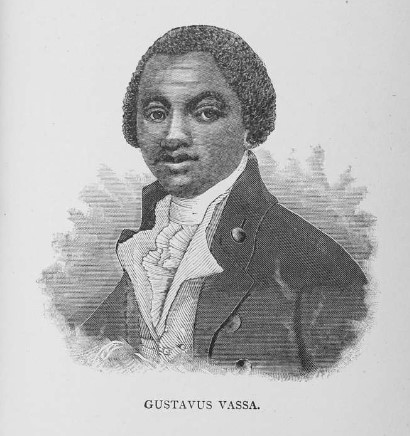This firsthand account of Olaudah Equiano’s capture by slavers, his enslavement, and the Middle Passage of 1789 was compiled by Gustavus Vassa the African. The English antislavery movement was prominently led by Olaudah Equiano. Olaudah Equiano, a former slave in the American colonies, gave the English reading public their first glimpse into slavery from a former slave’s perspective in 1789. Enslaved people’s aspirations for freedom were described, along with the terrors of capture and the Middle Passage.
It was in 1745 that Olaudah Equiano was born in Isseke, an agricultural village in what is now Nigeria, into the Ibo tribe. Equiano and his sister were captured by slave traders when he was 11 years old. His sister was separated from him for several months during his travels, during which he was traded multiple times. He eventually arrived at the coast and was sold to European slave traders.
During the Middle Passage across the Atlantic Ocean, Equiano endured horrors like no other. In the West Indies, he spent a few days on the island of Barbados before being sent to Virginia, where he was sold to a tobacco planter named Campbell. Taking inspiration from a sixteenth-century Swedish king, Michael Pascal purchased the 12-year-old in 1757 and renamed him Gustavus Vassa.

Olaudah Equiano was a member of the English forces supporting Pascal during the French and Indian War, participating in the successful siege of Louisbourg on Cape Breton Island in 1758. Aside from becoming a skilled sailor, Equiano also learned to read and write and was baptized in the Church of England while serving Pascal.
Equiano was sold by Pascal to Robert King in 1763, who lived in Montserrat in the West Indies as a Quaker slave trader. As a result of his agreement with King, Olaudah Equiano was able to earn money by trading between the West Indies and Georgia and South Carolina, as well as invest in trading voyages between the two states. His freedom was purchased after three years of hard work.
In 1768, Olaudah Equiano returned to London after working for King for a couple of years. Following that, he traveled for more than three decades. Equiano explored the Atlantic and Mediterranean worlds, including the Arctic (where he participated in a quest to find the Northwest Passage), Turkey, Genoa, Spain, Nicaragua, Pennsylvania, New York, and England. During his time in these places, he worked in a variety of jobs. The barber, the merchant, the personal servant, the author, and the lecturer were all roles he had in his life.
The antislavery cause was only slowly taken up by Equiano even though he was a free man. During the mid-1770s, he was an overseer on a slave plantation in Nicaragua where he worked for two years with Robert King in the slave trade. Equiano was motivated to attack slavery and the slave trade as a result of the brutality he witnessed and facilitated, combined with a profound spiritual conversion in 1774. Olaudah Equiano, who had been rejected by the Anglican Church in 1779, began writing against slavery.
He published letters and reviews challenging Tobin’s assertions of black inferiority, particularly those of West Indian planter James Tobin. In 1788, Equiano submitted an antislavery petition to the queen in an effort to relocate poor blacks from England to Sierra Leone. Due to the multitude of problems associated with differences in color, he advocated interracial marriage as a solution. There was more to this than rhetoric. Two daughters were born to Equiano and Susan Cullen after their marriage in 1792. Equiano became a true antislavery crusader thanks to his autobiography published in 1789.
This book is called The Interesting Narrative of the Life of Olaudah Equiano, also known as Gustavus Vassa, the African. He wrote the book as part spiritual narrative, part adventure tale, and part travel account. As a victim of the slave trade as well as one who contributed to the horrors of the pernicious labor system, he provided a powerful indictment of slavery and the slave trade. An autobiography written by Equiano became a bestseller before his death in 1797. This book appeared in eight editions in England and was translated into five other languages.
During the eight years that Olaudah Equiano spent campaigning against slavery and selling his book, he attracted support for the growing movement to end the English slave trade. Equiano’s autobiography also became the prototype of a new literary genre, the slave narrative, which became very influential in America because of his effectiveness as an antislavery voice.
Over a hundred such narratives existed by the time of the American Civil War, including Frederick Douglass’s classic Narrative of the Life of Frederick Douglass. They were testimony to the widespread urge for freedom among slaves in the midst of a cruel bondage system. Read More – Ugliest Woman in the World – Mary Ann Bevan







